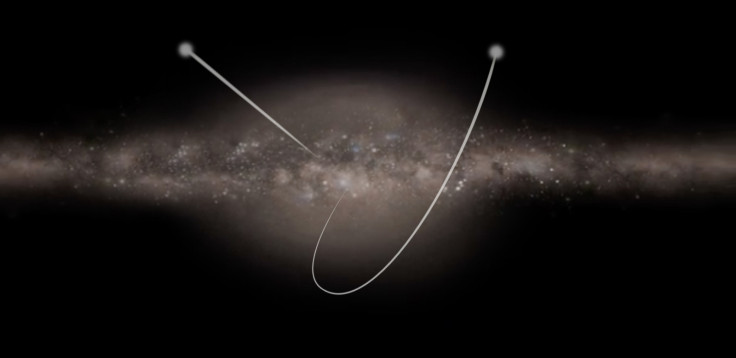Watch Milky Way's fastest stars flying through space, propelled by a supermassive black hole
The ESA's Gaia satellite, with the help of a specially designed neural network, spotted 6 stars flying at over 300 Kms/ sec.

Astronomers have spotted six of the fastest stars of the Milky Way, hurtling through space at over 300Kms/sec.
The stars were propelled into their current paths over a million years ago, after coming into contact with a supermassive black hole in the Milky Way galaxy. The high-speed stars were spotted via the ESA's (European Space Agency) Gaia satellite and a specially designed neural network, which functions as an artificial human brain.
One of the six stars was found travelling at over 500 Kms/sec, which according to the ESA is so fast that "it is no longer bound by the gravity of the Galaxy and will eventually leave." The stars were spotted by ESA's neural network, which analysed Gaia's data from its massive catalogue of over 1 billion celestial bodies.
"These are stars that have travelled great distances through the Galaxy but can be traced back to its core – an area so dense and obscured by interstellar gas and dust that it is normally very difficult to observe – so they yield crucial information about the gravitational field of the Milky Way from the centre to its outskirts," said Elena Maria Rossi from Leiden University, who presented Gaia's discovery at the European Week of Astronomy and Space Science in Prague.
"These hypervelocity stars are extremely important to study the overall structure of our Milky Way," Rossi added.
Given the complexities of finding and studying such stars, researchers opted to use a neural network designed to mimic the human brain to help with the hunt. "After proper 'training', it can learn how to recognise certain objects or patterns in a huge dataset. In our case, we taught it to spot hypervelocity stars in a stellar catalogue like the one compiled with Gaia," said Tommaso Marchetti, lead author of the study, which was published in the Monthly Notices of the Royal Astronomical Society.
"In just one hour, the artificial brain had already reduced the dataset to some 20 000 potential high-speed stars, reducing its size to about 1%," Rossi said, explaining how effective the neural network was in spotting the stars from Gaia's data. "A further selection including only measurements above a certain precision in distance and motion brought this down to 80 candidate stars."
"Combining all these data, we found that six stars can be traced back to the Galactic Centre, all with velocities above 360 km/s," says Tommaso.
The discovery marks the first time that astronomers have found new hypervelocity stars, apart from the 20 such stars that were already known. The newly discovered stars were also found to have lower masses, similar to the mass of the Sun. Scientists are also excited about the prospect of the discovery possibly leading to helping them unearth more information about the "most obscure" areas of our Milky Way galaxy.
You can watch the ESA's video detailing the evolution of the high-speed stars below.
© Copyright IBTimes 2025. All rights reserved.






















